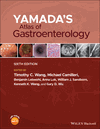Gallbladder and biliary tract: anatomy and structural anomalies
Summary
This chapter provides a pictorial reference depicting anatomical structural anomalies encountered within the gallbladder and biliary tract. The gallbladder lies in a depression along the inferior surface of the liver in a plane dividing the liver into its anatomical right and left lobes. The gallbladder is intimately attached to the liver by loose connective tissue that contains small veins and lymphatic vessels. The gallbladder is divided into four anatomical areas: fundus, body, infundibulum, and neck. The biliary tract is first apparent during the fifth week of gestation and develops as a ventral sacculation in the distal foregut. This sacculation grows into the ventral mesentery, which divides into two buds: the cranial bud develops into the liver and intrahepatic bile ducts, and the caudal bud develops into the gallbladder and cystic duct.



